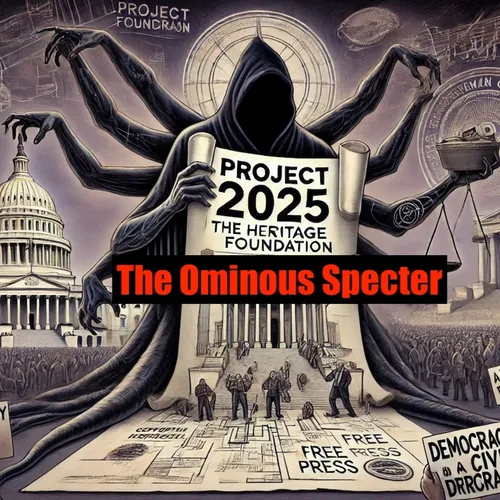"Project 2025: Reshaping American Governance Through Conservative Ideology"
- Author
- Quiet.Please
- Published
- Sat 08 Feb 2025
- Episode Link
- https://www.spreaker.com/episode/project-2025-reshaping-american-governance-through-conservative-ideology--64274541
As I delve into the intricacies of Project 2025, a sense of unease settles in, not just because of its ambitious scope, but also due to the profound implications it holds for the future of American governance. This initiative, spearheaded by the Heritage Foundation and crafted by former Trump administration officials, is more than just a policy blueprint; it is a comprehensive plan to reshape the federal government in the image of conservative ideology.
At its core, Project 2025 is a 900-page manual titled "Mandate For Leadership," which outlines a radical restructuring of the executive branch. The project's architects, including Paul Dans and Spencer Chretien, both veterans of the Trump administration, have woven together a tapestry of policy proposals that touch nearly every aspect of American life. From immigration and abortion rights to free speech and racial justice, no area is left unscathed[1][4].
One of the most striking aspects of Project 2025 is its expansion of presidential powers. The initiative advocates for a unitary executive theory, which centralizes greater control over the government in the White House. Kevin Roberts, President of the Heritage Foundation, has been clear about this vision: "All federal employees should answer to the president." This approach aims to eliminate the independence of key agencies such as the Department of Justice (DOJ), the Federal Bureau of Investigation (FBI), and the Federal Communications Commission (FCC)[3].
The project's personnel strategy is equally alarming. It proposes reclassifying tens of thousands of federal civil service workers as political appointees, allowing for their replacement with loyalists to a conservative president. This is part of a broader effort to create a "wrecking ball for the administrative state," as described by Russ Vought, a key figure in the project. The Heritage Foundation plans to have 20,000 personnel in its database by the end of 2024, all screened through a questionnaire designed to test their commitment to Trump's "America First" agenda[3].
The Department of Justice is another target for significant reform under Project 2025. The initiative views the DOJ as a "bloated bureaucracy" that has "forfeited the trust" of the American people. It recommends a thorough overhaul, with the DOJ's Civil Rights Division focusing on combating "affirmative discrimination" or "anti-white racism." This would involve prosecuting state and local governments, institutions of higher education, and private employers with diversity, equity, and inclusion (DEI) or affirmative action programs. Gene Hamilton, a former Trump DOJ official, argues that these programs "come at the expense of other Americans—and in nearly all cases violate longstanding federal law"[3].
In the realm of economic policy, Project 2025's proposals are just as far-reaching. It suggests cutting overtime protections for 4.3 million workers, stopping efforts to lower prescription drug prices, and limiting access to food assistance for over 40 million people who rely on it monthly. The project also aims to eliminate funding for key public transportation projects, such as the Capital Investment Grants (CIG) program, which has been crucial for awarding billions of dollars for infrastructure projects across the country. This could make it much harder for Americans without cars to get to work and travel around their communities[2].
Environmental policies are not spared either. Project 2025 seeks to undo significant climate action by attacking the EPA's "Endangerment Finding," a critical component of the Clean Air Act that requires the EPA to curb emissions of greenhouse gases. The project proposes 'updating' this finding, which would restrict the federal government's mandate to combat climate change. Additionally, it suggests disbanding the National Oceanographic and Atmospheric Administration (NOAA), which provides critical weather...
